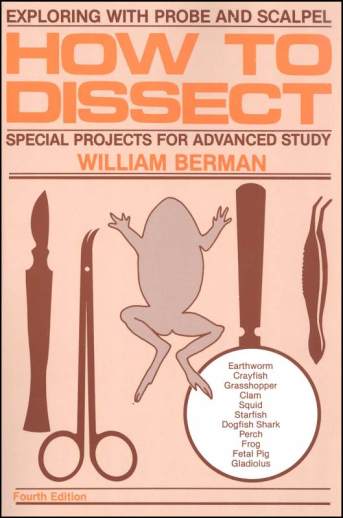We use cookies to make your experience better. To comply with the new e-Privacy directive, we need to ask for your consent to set the cookies. Learn more.
How to Dissect
How to Dissect is a one-stop book for all of your dissecting guidelines. This book offers step-by-step illustrations and instructions for dissecting an earthworm, crayfish, grasshopper, clam, squid, starfish, shark, perch, frog, and fetal pig as well as a gladiolus to introduce botanical dissection. Dissections range from beginning to advanced and discuss the digestive, circulatory, reproductive, excretory, nervous, and respiratory systems. The book begins with an explanation and importance of dissection, points for successful dissection, and a list of tools commonly used in the process. A conversion table from English to metric measure is included for easy reference, since science tends to use metric as the universal system. Each dissection lesson includes background information about that animal, materials needed for the dissection, and black & white illustrations along with instructions for each step of the dissection. It also explains compass points of anatomy (anterior, posterior, etc.) which are found in all creatures and are used to help observe life. This 200+ page, paperback guide would be a terrific resource to accompany any biology curriculum.
| Product Format: | Softcover Book |
|---|---|
| Brand: | Fireside Books |
| Author: | William Berman |
| Grades: | 9-AD |
| ISBN: | 9780671763428 |
| Length in Inches: | 8.9 |
| Width in Inches: | 6 |
| Height in Inches: | 0.6 |
| Weight in Pounds: | 0.56 |

